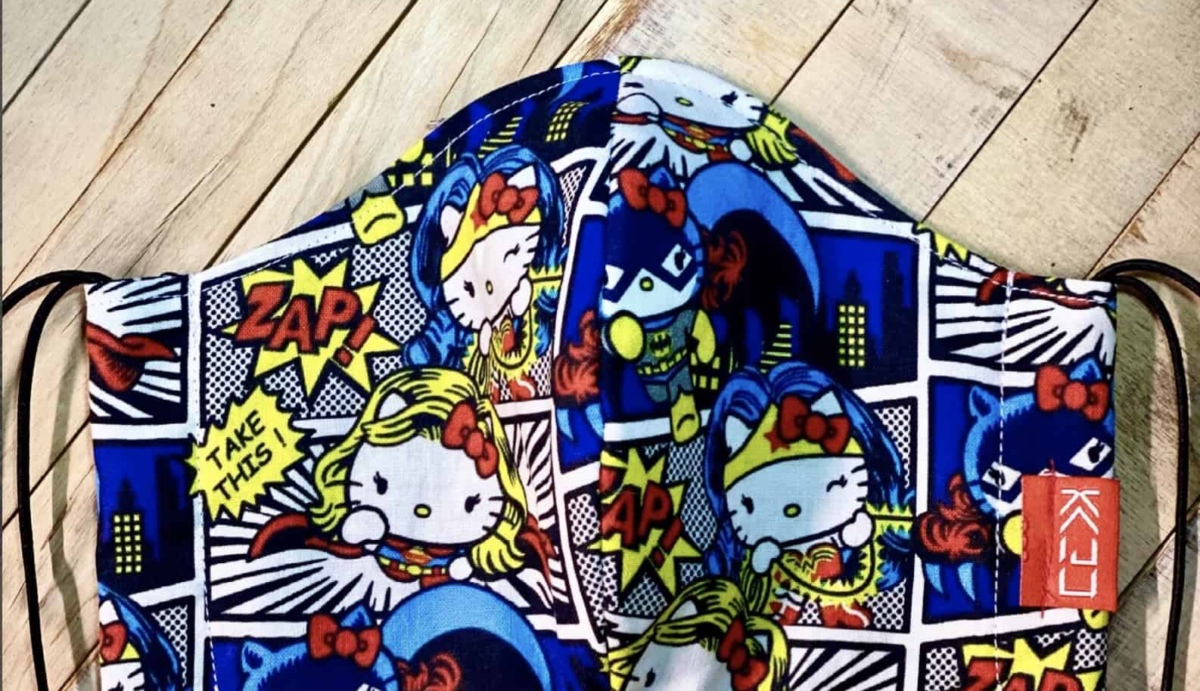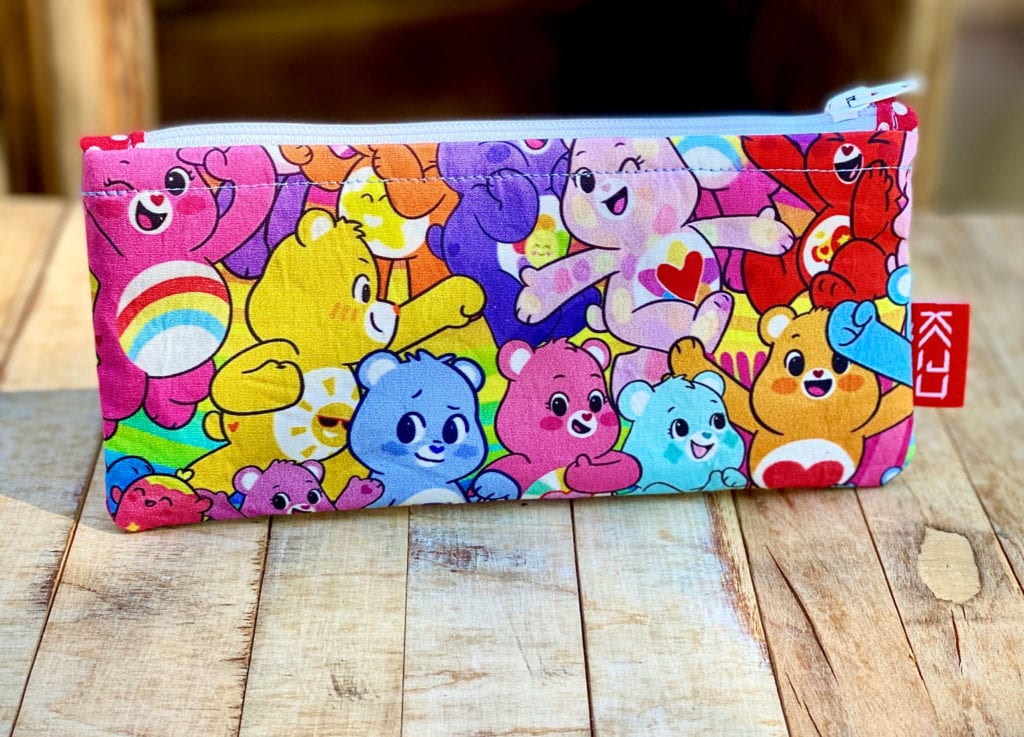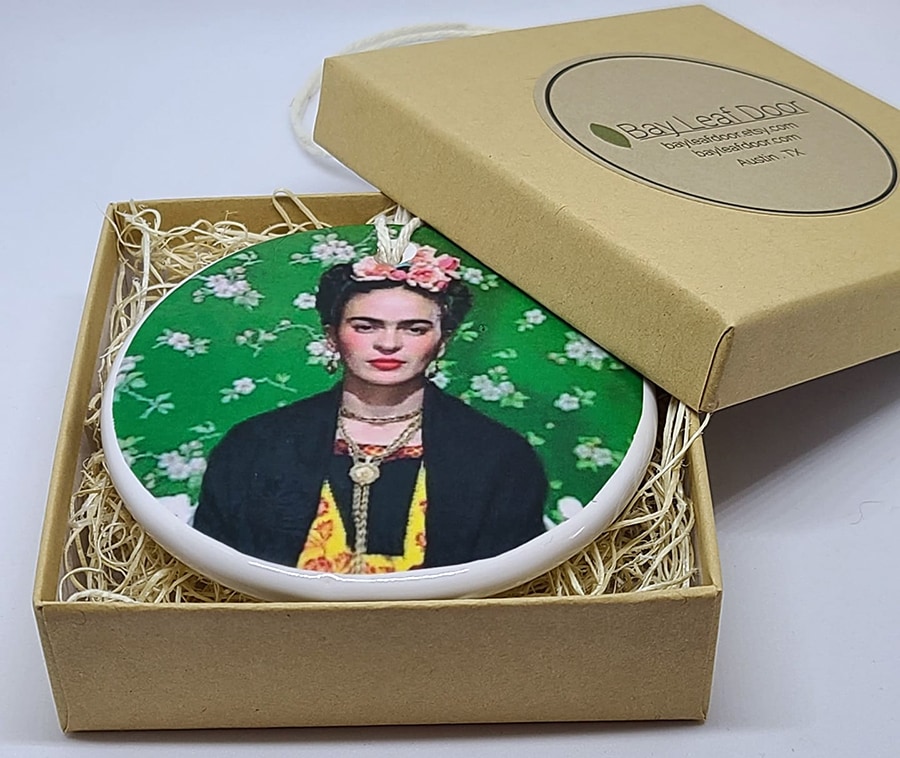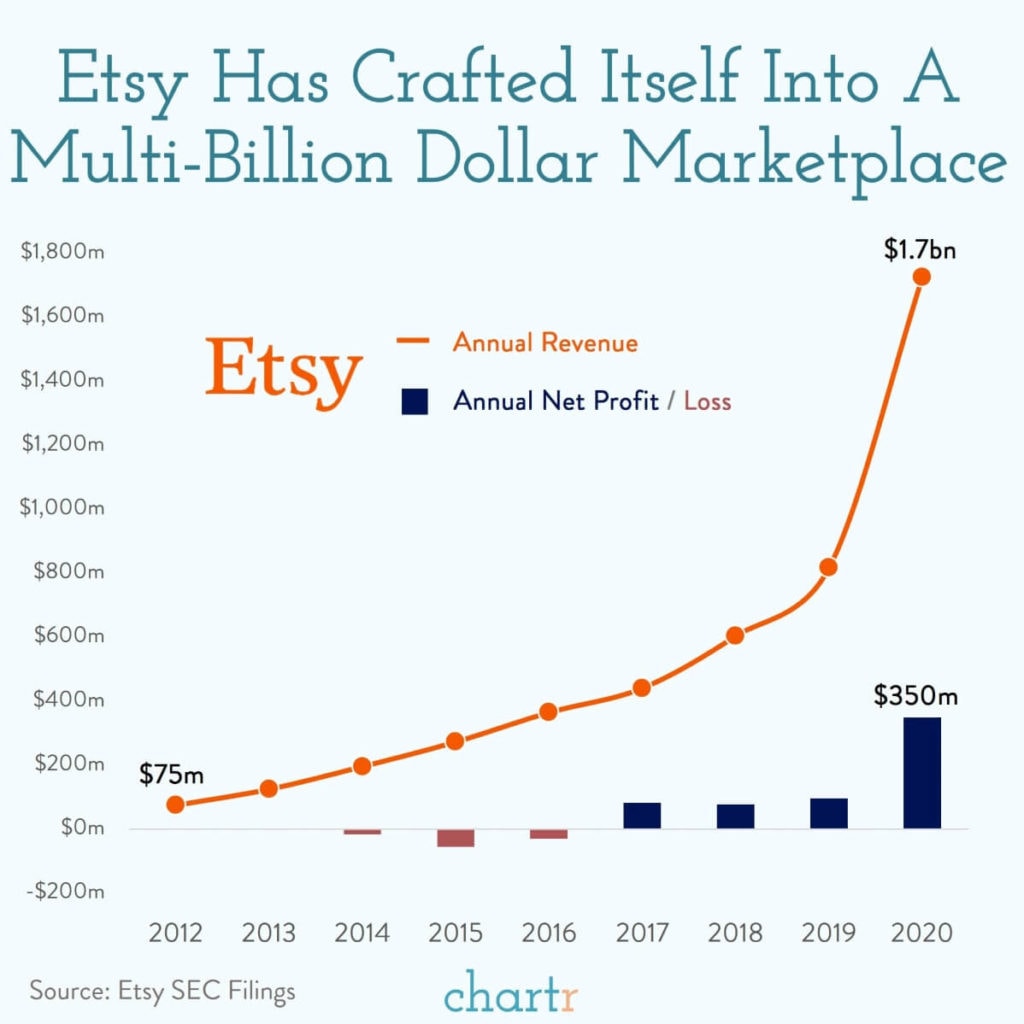
Where it started for Chris Gomez was with a bag to carry Dungeons & Dragons dice. How it’s going is that Gomez has sewed thousands of facemasks with Japanese fabrics since the pandemic began.
The facemasks are listed on Kaiju Cut and Sew, Gomez’s Etsy storefront that also carries t-shirts, hats, wallets, and other handmade items featuring his unique designs.
Gomez, who worked in the tech industry, took sewing classes before the pandemic with the goal of making items like dice bags, which ended up selling at a local gaming shop. He kept learning to make items such as a fanny pack for his girlfriend before his goods got enough attention that he was invited to showcase his work at the RTX Expo and East Austin Studio Tour.
But it’s COVID-19 that has elevated Kaiju Cut and Sew, which is fortuitous for Gomez, who quit his job just before the pandemic. Once stay-at-home orders took effect, he created facemasks with reversible fabric prints and shared them to Instagram. The $20 masks are featured in a YouTube video made by a popular ASMR channel, Gibi ASMR, and they’re worn by employees at Austin’s Ramen Tatsuya restaurants.
Business is booming, and it’s not just masks.
“I’ve gotten to the point where I can work on leather goods and it’s not always masks,” Gomez said. “Things have kind of got back to some sense of balance.”
Gomez is among hundreds, if not thousands, of Austinites who have either made a business out of selling on Etsy or have used the site to build side hustles. The New York-based e-commerce platform, which is worth more than $17 billion, had about 2.5 million sellers selling about $4.7 billion worth of goods in 2019.
According to the Wall Street Journal, Etsy buyers grew by 41 percent year-over-year in Q2 2020. In April, Etsy sold 12 million masks, which became Etsy’s second-biggest category after houseware and home furnishings.
Austin creatives say that Etsy provides them an easy-to-build platform that attracts new customers. Gomez, for instance, was too busy to build his own website or pay someone else to do it, so he’s relied on Etsy and Instagram as his online sales tools.
“It helps that I have a unique name and that my product is very specific,” Gomez said. “You can throw a dart and probably hit someone making a mask, but I like to think the ones I’m making, with specific types of fabric, speaks for itself.”

An Etsy Store With Austin Roots
Julie Taylor creates Austin-inspired craft goods on her Etsy store, Bay Leaf Door. Before she found a focus for her store, she almost left Austin with her husband after her parents passed away and her children grew up.
“I really stepped back and looked at what I love about my home here in Austin,” she said. “I just love the people, the culture.
“I started trying to incorporate a lot of the things that I love in what I do and what I offer.”
Taylor first learned how to craft from a neighbor who owned a shop. After considering a brick-and-mortar location, she decided on Etsy to save on overhead. Most items she sells – like ornaments, necklaces, and earrings – are for weddings or holiday gifts. To generate sales, she uses trending tag words and Etsy’s advertising tools, which start at about $1 a day.
“We also run discount promotions during some of our slower seasons,” she said.
To promote her goods beyond Etsy, Taylor relies on Twitter, Instagram, Facebook and Pinterest. She also steers people to her own website to limit competition.
“It has helped us with added exposure and flexibility,” she said. “We want to advertise solely for ourselves and not for Etsy.”
She does find Etsy’s customization tools, called Etsy Plus, to be worthwhile at $10 a month and 20 cents per listing plus 5 percent of each sale. Taylor thinks that especially for those who don’t have their own online store, Etsy is a great place to start.

Shining A Light On E-Commerce
The owner of Austin’s Lightcrafters Handcrafted Lighting, Kent Samuelson sold online 20 years ago, before it was mainstream.
“I was selling at Pecan Street Festival and a guy came up to me and he wanted to barter,” Samuelson said. “He was building websites back when emails were still new, and he built my first site. I had a unique niche at a time when you didn’t have to pay to be found.”
About 10 years ago, Samuelson launched his Etsy store to promote his metal sconces, custom mirrors, home theater lighting, and night lights. His move online helped offset the losses this year from events like Blue Genie Art Bazaar, which has limited entry, and Armadillo Christmas Bazaar, which is going virtual.
While April and May were “scary months,” Samuelson says, his business grew as people invested more on home improvement projects. One of his customers, a cattle rancher, ordered a water-jet cut bracket with his brand and stars that will go on a wall and hold up eaves.
Samuelson attributes his longevity to repeat business and Etsy’s marketing tools. His metalwork stands out on Etsy, where such a unique product drives traffic to his site, Lightcrafters.com. He pays to advertise Lightcrafters not only on Etsy but across the Internet, and he offers free shipping, which Etsy’s search algorithm favors.
“They find my site and they say, ‘I’ve been looking for unique lighting, and the pricing’s good, everybody’s happy.’ I hear that from a huge percentage of my clientele,” Samuelson said.
E-commerce has changed his life.
“It’s wonderful,” he said. “By far, the bulk of my business is done online, and I don’t have to pay sky-high rent to be found.”

Tips for Etsy Newbies
Etsy sellers shared advice for those new to the platform:
- Be hands-on, honest, and trustworthy.
- Keep expenses low and start small.
- Make something you love and embrace your story.
- Research other Etsy stores to determine your pricing.
- Etsy favors stores with free shipping.
- Don’t undersell yourself. If your product is unique and well-made, it’ll stand out.



